Stagger your planting in July and August to ensure a continual harvest throughout the fall.
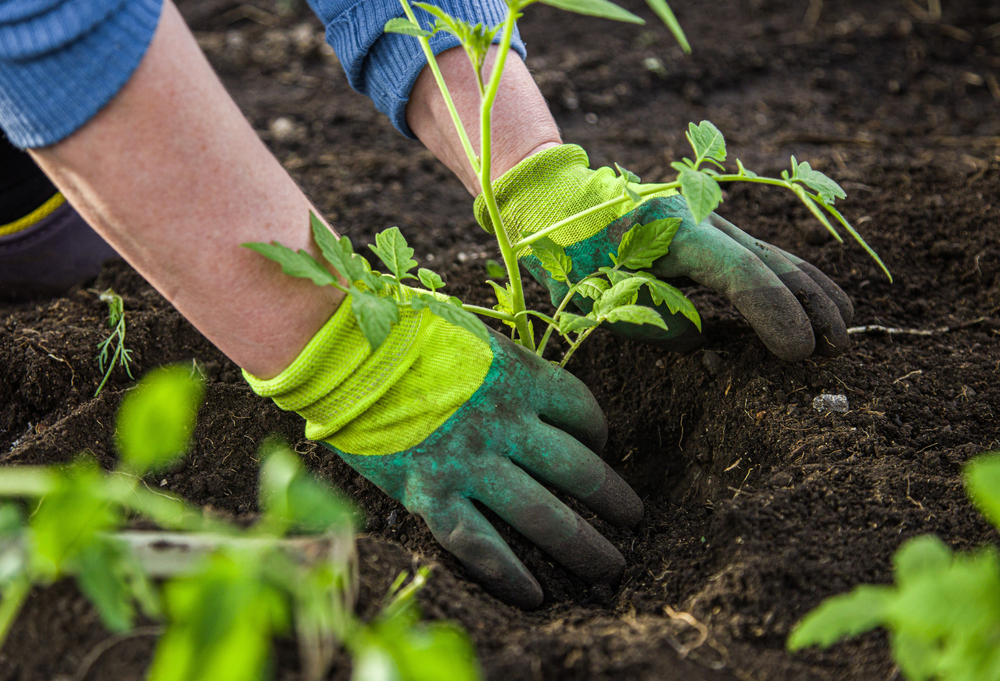
The savviest, most dedicated gardeners hold onto little tips and tricks to keep as many crops growing in the soil for as long as possible. One of those techniques is known as succession planting, which involves strategically planting a new crop where one has just been harvested. This helps maximize yield without needing to farm extra acres.
You can follow succession planting by staggering your planting periods every week to 30 days. You can also opt for an approach that involves planting a new crop with a maturation period that fits into what you have left in your growing season.
If you’d like to stagger your crops according to precise, varied time intervals, we suggest referring to this helpful chart from Johnny’s Selected Seeds. Otherwise, if you want to opt for a basic overview of succession planting in July and August, we’ve crafted a guide for you with some variety recommendations and timing directives.
The Case for Cool-Season Crops
If you’re planting in the early or mid days of summer, you’re going to want to opt for cool-season crops. They grow best when temperatures are in the 50-60°F range. You’ll find specific examples below. The only time you’d want to opt for warm-season crops if you know the weather is going to stay in the 70-80°F range throughout the fall.
Some Initial Tips
Summer brings heat waves, heavy sun and, depending on where you live, sometimes, periods of drought. This can make it difficult for seeds to germinate, as they need soil that will be consistently moist. There are, however, a few things you can do to curb any challenges to ensure your soil doesn’t dry out and your future food source is provided with the conditions needed.
Before planting, to ensure the soil is better able to retain moisture, work in a half-inch layer of compost. Below, we will point out if your crop is lower or higher maintenance. We also suggest waiting to plant until a cloudy or rainy day or in the evening when the sun is less strong.
You’ll also want to keep newly seeded or transplanted crops watered about one to two times a day, but you can help prevent the soil from drying out so quickly by adding some mulch to the top layer of your soil. Again, you will find more specific recommendations below.
Lastly, make sure there is enough time for your succession crops to germinate and mature before the cold weather arrives. We’ve provided some general guidelines below on recommended varieties and prevalence of planting based on cold-weather timelines.
What to Plant in July
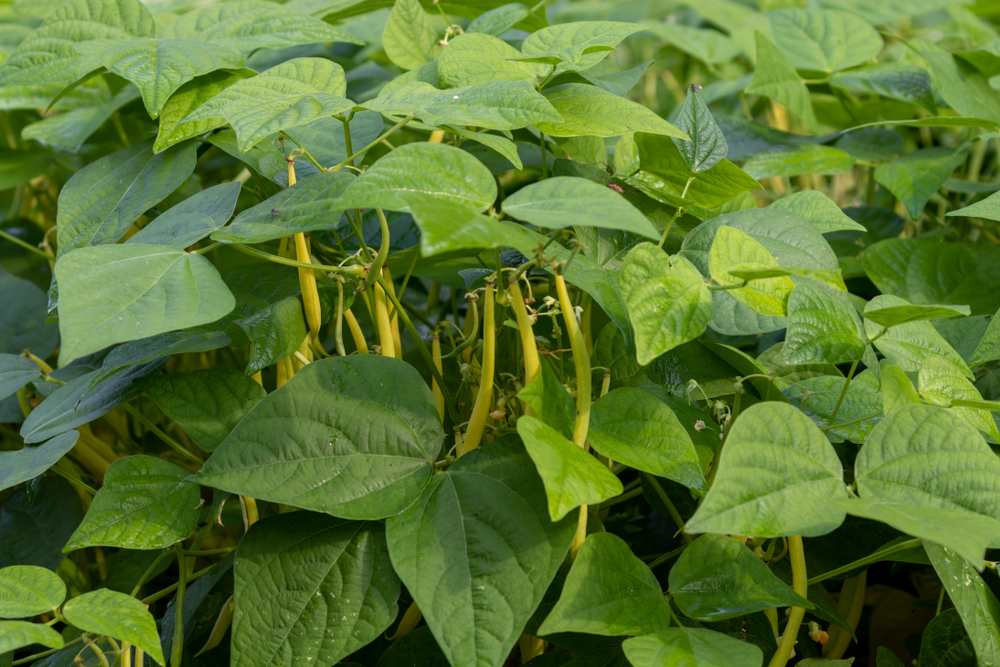
Bush beans. Photo by Markus_272, Shutterstock.
Bush beans
Otherwise known as snap beans, bush beans can be planted every two to three weeks throughout the summer until mid- to late July. A good indicator of knowing when to sow new seeds is when your previously planted crop gets a second set of true leaves. (For those new to the term true leaves, they’re tiny miniature versions of your full-grown plant leaves. If you have “one set of true leaves,” that’s two leaves. If you have “two sets of true leaves” that’s two pairs of leaves or four leaves.)
On average, most varieties need 50 to 55 days to produce.
Variety recommendations: Astrel French Filet (55 to 60 days); Derby Green (55 days); Goldcrop Yellow Wax (54 days); Jade Green Pod (56 days); Provider (50 days); Cosmos (51-60 days); and Mascotte (50 days).
Cold hardiness: Bush beans will be killed by frost. Use a row cover when you’re coming up close to your first frost date.
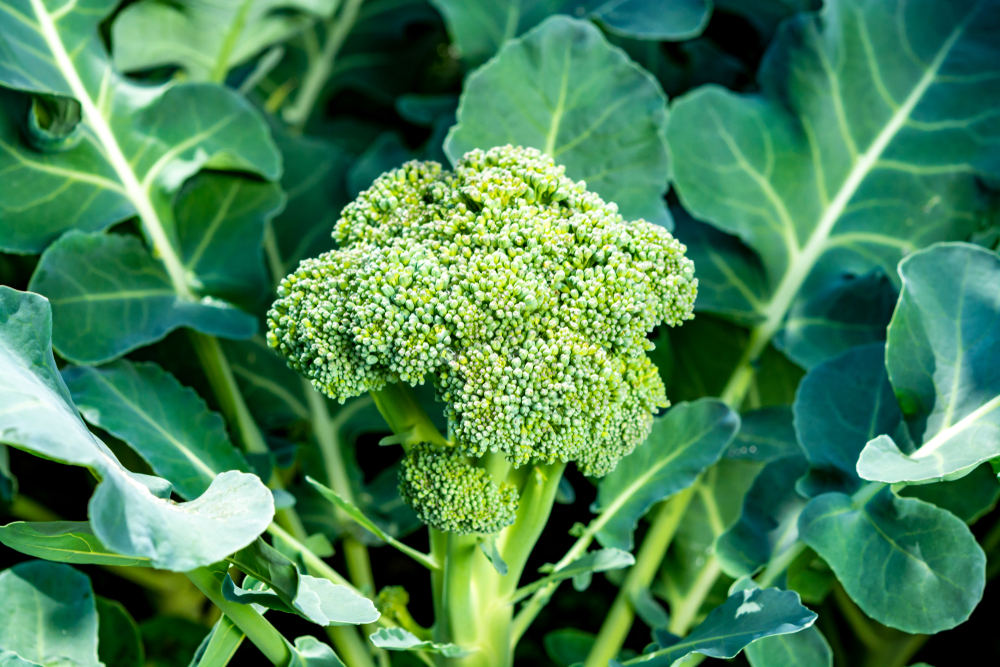
Broccoli. Photo by barmalini, Shutterstock.
Broccoli
Most gardeners prefer to transplant their broccoli rather than planting from seed. Starting them indoors under grow lights gives the young plants four to five weeks of ideal growing conditions and prevents damage from pests such as slugs and cabbage worms.
If you opt to sow seeds in the soil, be sure to keep newly seeded garden beds well watered. Make sure the seeds are planted approximately half an inch deep and 12 to 24 inches apart. If you are planting more than one row, try to leave 36 inches in between each row.
We suggest fertilizing the soil three weeks after planting and mulching with straw or shredded leaves right after if you’ve moved transplants into your bed. This will hold the moisture and reduce any stress on the seedlings.
On average, it takes broccoli anywhere between 80 and 100 days to grow from seed. When transplanting them, the growth time is around 55 to 85 days.
Variety recommendations: Packman Hybrid (60 days); Green Goliath (55 days), Green Comet Hybrid (40 days); Green Magic (60 days); and Aspabroc Broccolini (50 days).
Cold hardiness: Broccoli can survive light frost, so you can plant it up to 85 days before your first frost.
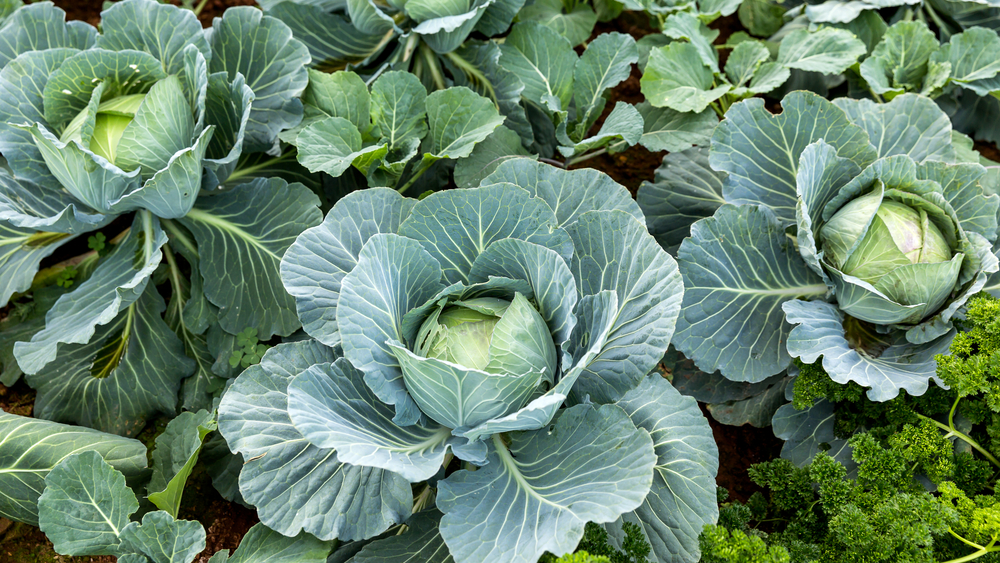
Cabbage heads. Photo by dourleak, Shutterstock.
Cabbage
For a fall cabbage harvest, plant the seeds directly in the soil in July—just keep that soil well watered and mulched up, as recommended with broccoli. If you’re worried about the soil being too dry, you can also start cabbage seeds indoors. We recommend supplementing your garden with plenty of well-aged compost dug in prior to planting. When you do plant, leave 1.5 to two inches between each crop and two inches between each row.
On average, it can take cabbage 50-90 days to mature.
Variety recommendations: Dynamo Hybrid (70 days); Early Golden Acre Year (60 days); Early Stonehead Hybrid (65 days); Taiwan Cabbage (55 days); and Consul (67 days).
Cold hardiness: Cabbage can survive light frost, but it will be damaged by hard freezes.
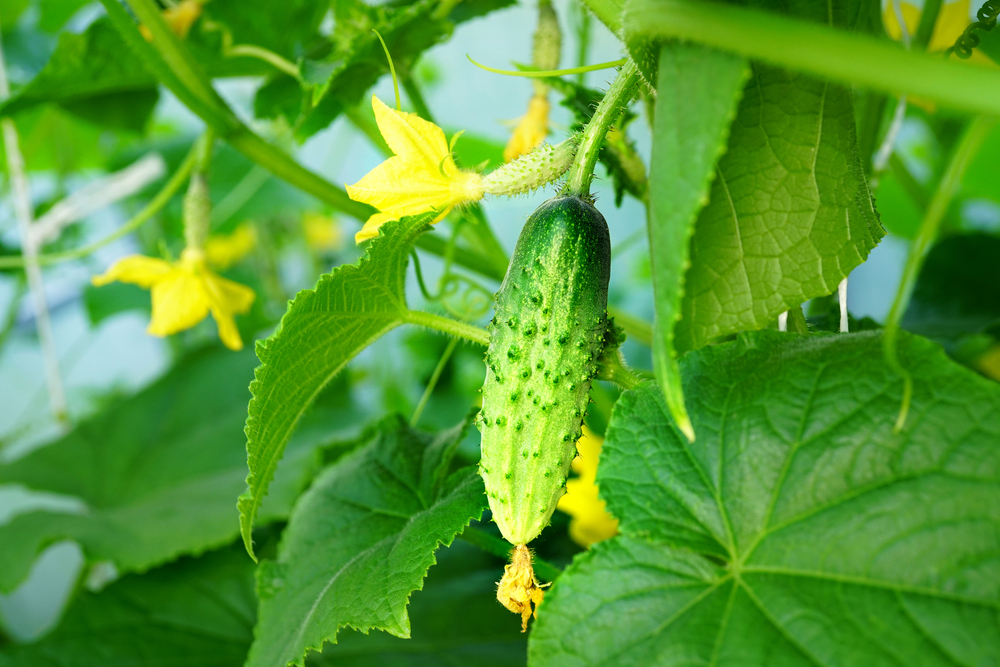
Young cucumber on the vine. Photo by LedyX, Shutterstock.
Cucumbers
Cucumbers absolutely thrive in the summer heat. They do best when the soil warms up to 60-70°F. If you’re short on space, you can grow vining cucumbers vertically on trellises and tunnels. Plant the seeds any time in July or every 21 days. They’ll need regular daily watering to keep fruit from becoming bitter or misshapen.
We suggest mixing in two to three cups of compost around each area where you plan to plant your seeds. One little trick to speed up germination would be to soak your cucumber seeds in water overnight before you plant them.
Most cucumber varieties require 55 to 70 days to mature.
Variety recommendations: Marketmore (60 days); Spacemaster (58 days); Olympic Thunder (55 days); Ashley (66 -75 days); Bush Champion (55 days); Fanfare (63 days); and Long Green Improved (50-70 days).
Cold hardiness: Cucumber plants will not survive frost. Protect them with row covers or frost blankets if you’re coming up close to your first frost before harvest.
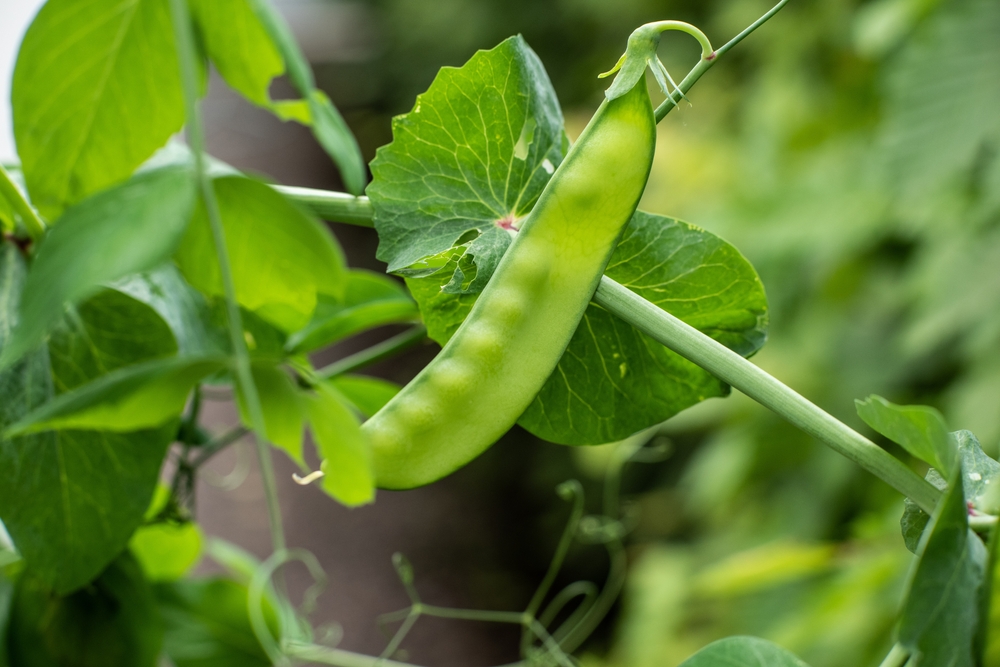
Ripe snap peas. Photo by Trygve Finkelsen, Shutterstock.
Peas
Summer-planted peas are typically ready to pick in early to mid-September. Like cucumbers, seeds can also be soaked in water overnight to speed up germination. Plant your seeds directly in the garden approximately one inch apart from each other. Rows should be 18-36 inches apart.
When your seedlings sprout up, shade them from the sun during the hottest part of the day and mulch your soil to help reduce soil temperature and keep moisture in. We also suggest cutting back on regular fertilizer inputs, or at least avoid fertilizer with high nitrogen. It will also be important to keep plants well watered.
Pea varieties typically take 60 to 80 days to mature. (Although we’ve included some speedy bloomers below.)
Variety recommendations: Early Crop Maestro (61 days); Early Crop Progress No. 9 (63 days); Sugar Snap Edible Podded (68 days); Sugar Snap (58 days); Knight (56 days); and Laxton’s Progress (55-60 days).
Cold hardiness: Peas can survive light frost, but they will be damaged by hard freezes. Temperatures lower than 28°F will kill them.
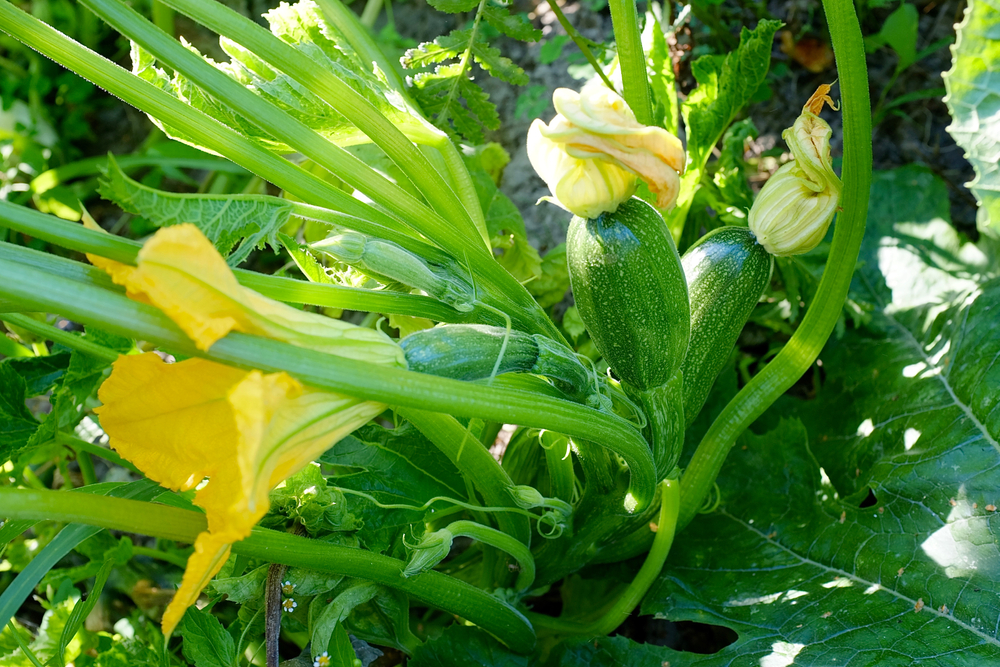
Green zucchini. Photo by eugenehill, Shutterstock.
Zucchini
Zucchini is known for being a fast-growing, heat-loving vegetable. You can plant new seeds every four to six weeks—all the way up until the last harvest reaches your first expected frost date.
Directly sow seeds in level ground two to three inches apart and thoroughly water after planting. Add a layer of mulch and/or compost to lock in soil moisture.
Insect pests are generally the worst for these crops during the hottest months, but you can keep the plants covered with row covers until their flowers begin to open. Typically, by the time you uncover the plants to allow for pollination, the weather will have cooled off and pests won’t be as prevalent.
Varieties take on average 45 to 55 days to reach maturity.
Recommended varieties: Z’Oro (45 days); Crookneck (43-45 days); Straightneck (50 days); and Zephyr (54 days).
Cold hardiness: Generally, frost will kill zucchini or, at the very least, damage it.
What to Plant in August
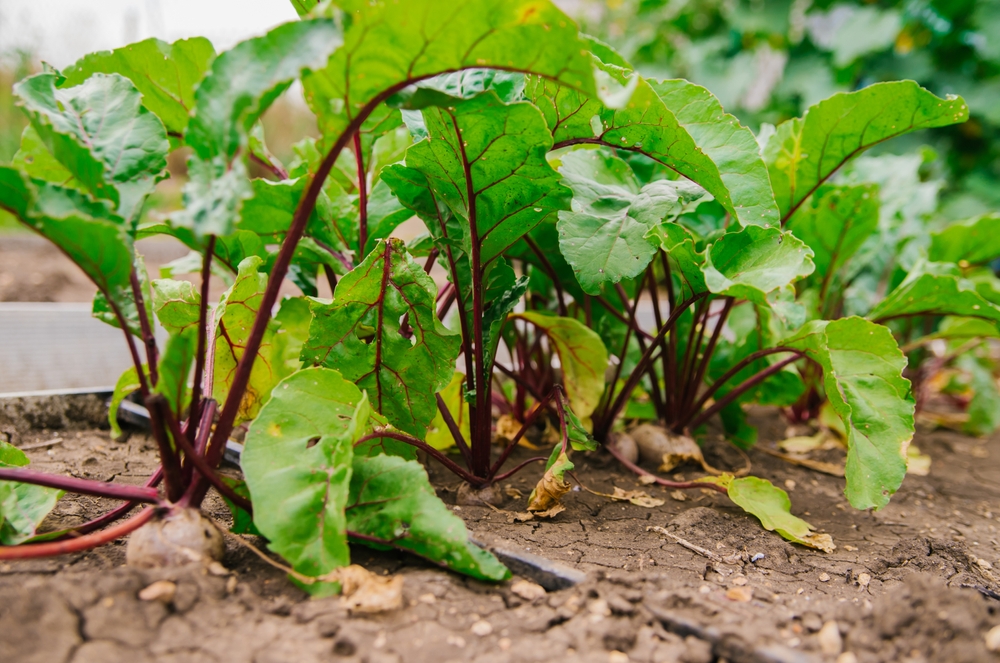
Beets and their greens. Photo by Alie04, Shutterstock.
Beets
Seeds can be planted every 14 days up until six to eight weeks before the first average fall frost. Like many root vegetables, beets don’t tolerate transplanting very well. Your best bet is to sow seeds in the garden. For a better rate of germination, soak beet seeds in water for 24 hours before planting.
Once the seedlings have grown to about four to five inches high, add mulch in between the rows to help retain moisture and keep weeds down. Thin the seedlings to ensure there are two to three inches of space between them once they are growing well.
Beets take an average of 50-60 days to mature.
Recommended varieties: Big Red Hybrid (55 days); Burpees Golden (55 days); and Ruby Queen (55 days).
Cold hardiness: Can withstand light frosts and survive down to around 29°F if unprotected.
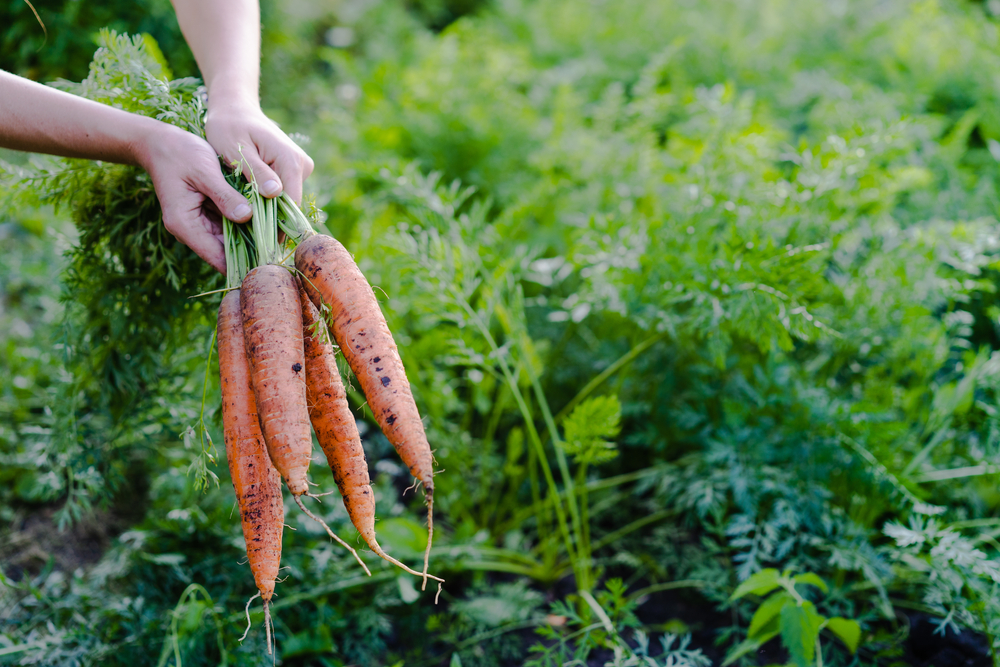
A bunch of fresh carrots. Photo by Uryupina Nadezhda, Shutterstock.
Carrots
We suggest planting your carrots in early August, every three weeks. Carrots need consistent moisture to germinate, so regular watering is key. You can also cover your beds with a shade cloth or row cover to keep moisture locked in. Plant them in the soil three to four inches apart. Once the seedlings sprout up and are a few inches tall, thin them so there are at least two inches of space between each one. Include fertilizer in your rotation after five weeks.
On average, carrots take around 70 to 85 days to mature.
Variety recommendations: Napoli (55 days); Bolero (75 days); Babette (57 days); Little Finger (65 days); Thumbelina (60 days); and Yaya (65-70 days).
Cold hardiness: Carrots are relatively hardy and survive temperatures as low as 20˚F before dying off. But even when the tops of carrots are killed by cold, the roots will remain in good condition if they are mulched over with a layer of insulating material such as hay or leaves.
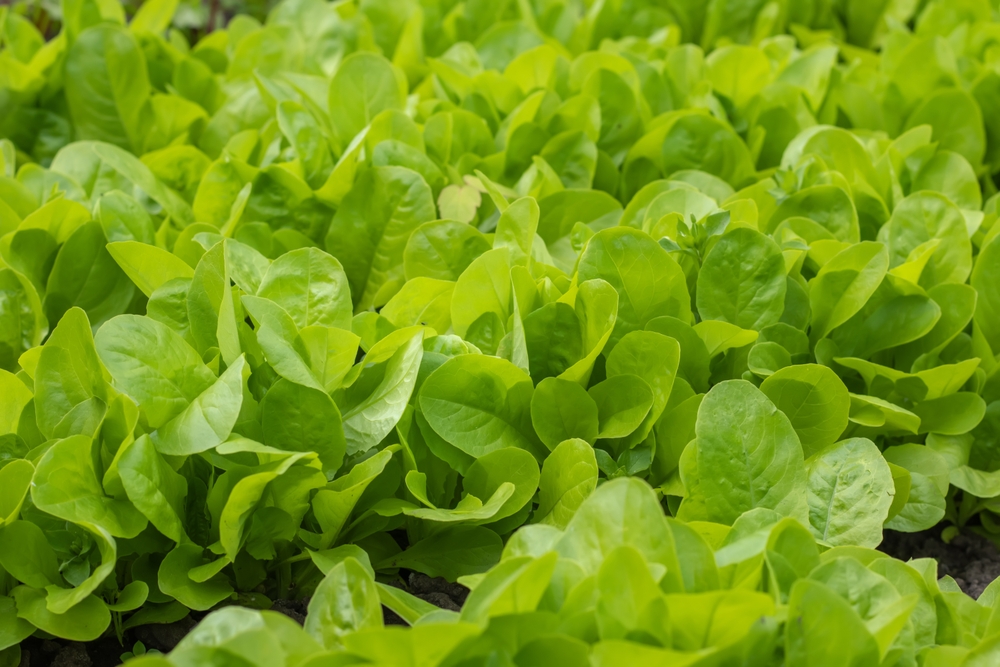
Fresh lettuces. Photo by Skrypnykov Dmytro, Shutterstock.
Lettuce
Plant your lettuce in mid- to late August, every two to three weeks, up until your first fall frost. Lettuce seed doesn’t germinate well when the temperature is high and the chances of germination substantially decrease when soil temperature exceeds 80-85°F. Water regularly, but not too often, as lettuce is vulnerable to root rot.
If you anticipate an exceptionally hot late summer, start your seeds indoors under grow lights. When you plant them in soil, plant each seed or seedling two inches apart, with the rows six yo eight inches apart.
Most lettuce varieties take 45 to 65 days to reach maturity.
Variety recommendations: Buttercrunch (67 days); Salanova (55 days); May Queen (45-60 days); Vulcan (50 days); Jericho (60-65); Bibb-type ‘Buttercrunch’ (68 days); Red Sails (43 days); Simpson Elite (48 days); and Black Seeded Simpson (45 days).
Cold hardiness: Lettuces can survive light frosts, but heavy frosts will leave considerable damage. If you’re planting into the fall, use a row cover. If it’s light enough, you can lay this directly on top of your plants or make use of a wire hoop and drape your protective material over that.
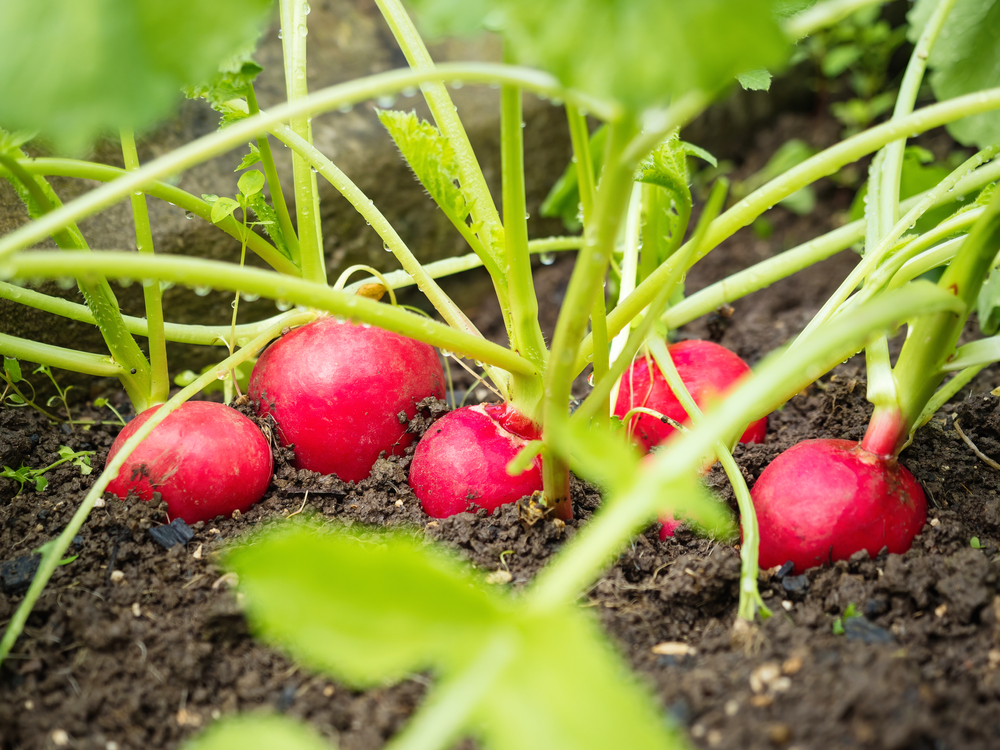
Ripe radishes. Photo by Digihelion, Shutterstock.
Radishes
Plant radish seeds every two weeks, continuing until four to six weeks out from the first fall frost. Choose a spot where there is a lot of sun and plant each seed about one inch apart. Make sure the soil drains well and is consistently moist.
Mulching the radishes with compost that has wood ashes will not only help retain moisture in dry conditions but also keep pests such as root maggots away. We suggest avoiding fresh manure or fertilizers high in nitrogen. Once the seedlings are two inches tall or about a week old, it’s important to thin radishes so you have spacing of three inches between each one.
On average, most radishes take 30 to 60 days to reach maturity.
Recommended varieties: Sparkler (25 days); Cherry Belle (22 days); Early Scarlet Globe (23 days); and Easter Egg II Blend (30 days).
Cold hardiness: Radishes can tolerate frost and temperatures down to mid 20˚F, but they have the potential to be damaged or killed by a sustained hard freeze. Add a layer of hay or leaves mulch over the top layer of soil for additional protection to the cold.
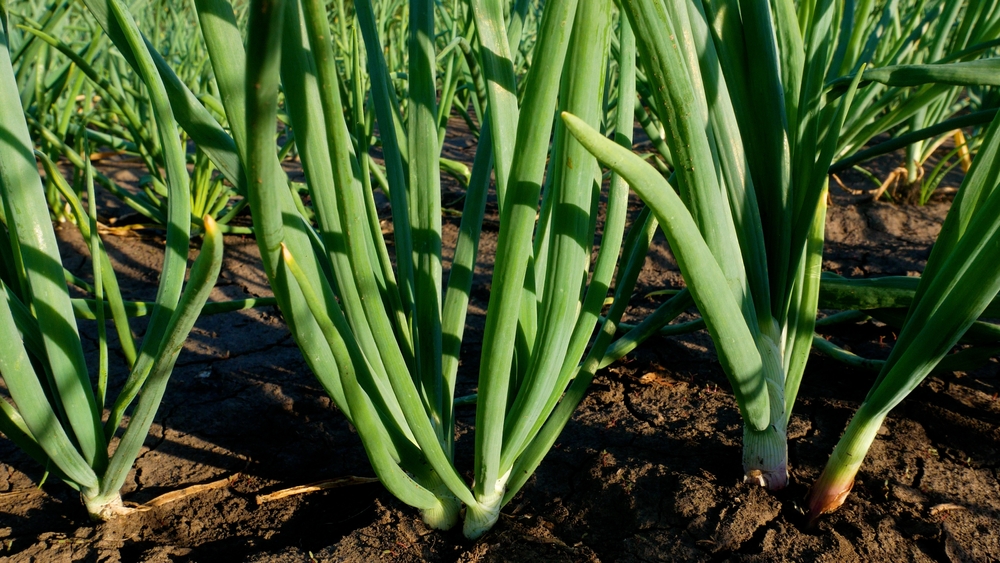
Green onions. Photo by Seneline, Shutterstock.
Bunching onions
Starting in August, you can plant your onions directly from seed every three to four weeks, no later than 60 days before the first expected frost in your area.
Look for a spot in your garden with a lot of sun and plant your seeds about four inches apart. They thrive in loose, well-drained soil. Seeds are sensitive to drought, so the soil must remain moist after the first watering until the seedlings emerge, which takes about 10 to 20 days.
We also suggest fertilizing regularly up until the bulbs have emerged above the soil. Fertilizer that’s high in nitrogen, such as fish emulsion, is best.
On average, bunching onions reach maturity in 60 to 70 days.
Variety recommendations: Evergreen Hardy White (65 days); Guardsman (50 days); Deep purple (60 days); White Spear (65 days); and Tokyo Long White (75 days).
Cold hardiness: Varieties are tolerant to temperatures as low as 20°F, and they can survive light frosts. We suggest adding a layer of mulch that is about two inches deep when cold and freezing temperatures are expected. Straw, pine needles, grass clippings or other natural mulches will be effective.
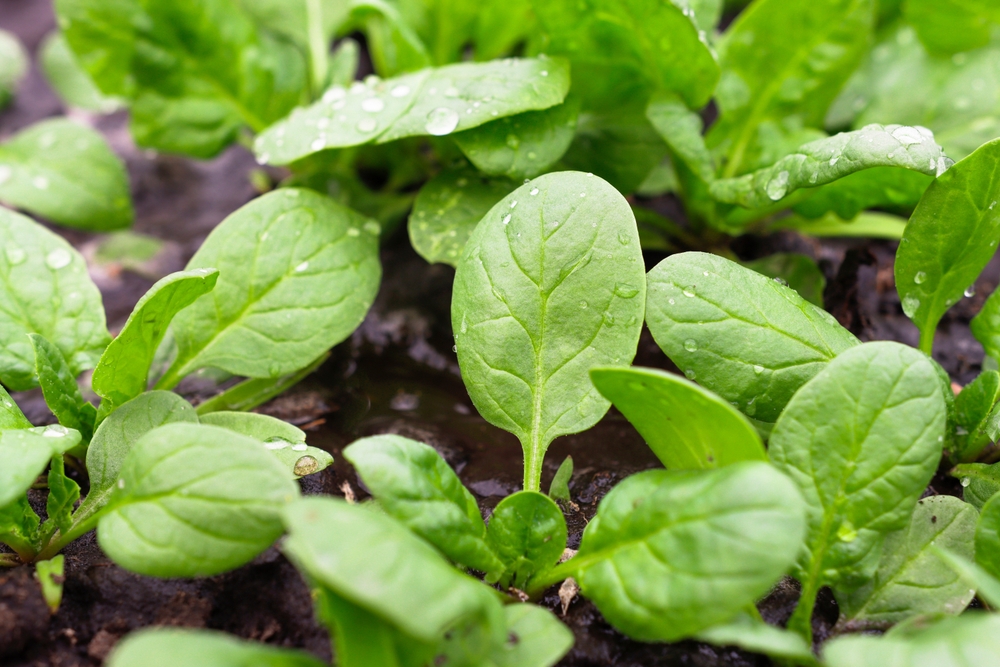
Young spinach. Photo by Julia Cherk, Shutterstock.
Spinach
In late August, plant your spinach every two weeks. You can sow seeds until mid-September or eight weeks before your first frost. Pick a shaded spot for your summer sown seeds and keep them well watered. We suggest planting more seeds than you think you’ll need, as warm soil tends to reduce the germination process. Plant the seeds from half an inch to a full inch deep and about one inch apart in each row.
On average, it takes about 35-45 days for spinach to reach maturity.
Recommended varieties: Bloomsdale Long Standing (45 days); Olympia Hybrid (42 days); New Zealand (55-65 days); Imperial Green (45 days); Bloomsdale (40- 48 days); Seaside (20-25 days); and Malabar (55-75 days).
Cold hardiness: Survives light frost, but may overwinter. We suggest using cloche protection as cold weather with temperatures lower than 15ºF begin to approach.
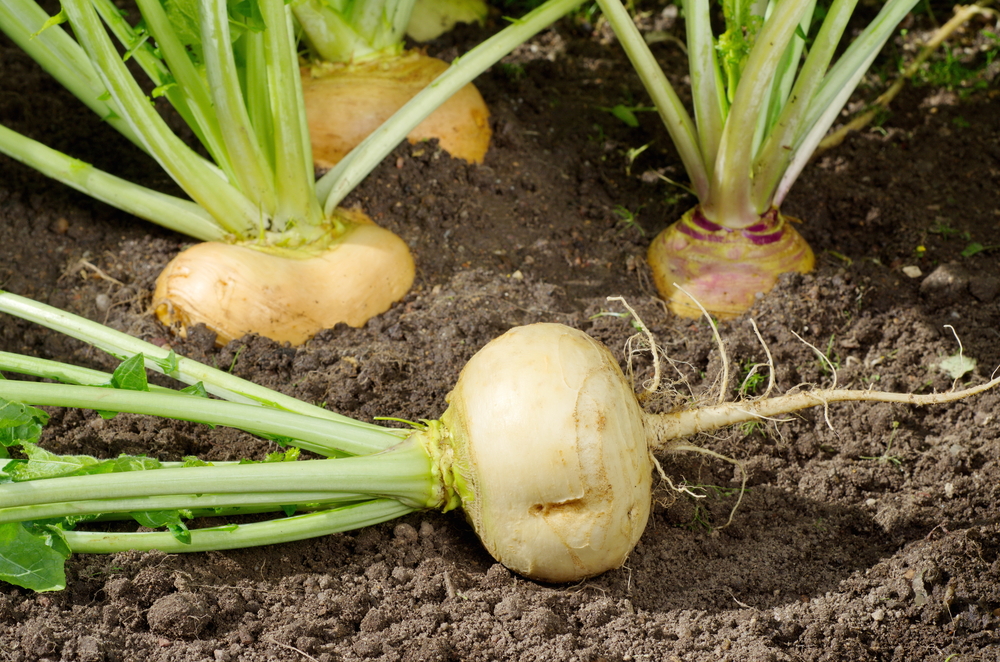
Turnips. Photo by Elena Koromyslova, Shutterstock.
Turnips
Plant the turnips every two to three weeks, all the way up to eight weeks before your last frost. They typically don’t transplant well, so direct seeding is the way to go.
Fun fact: Turnips are also a spring crop, but one that is sown in late summer is usually sweeter and more tender. You’ll also have less of a problem with pests when planting in the summer. Before planting, mix in an organic fertilizer about 12 inches into the soil. Plant your seeds two inches apart and rows 18 inches apart. Once seedlings are about four inches high, thin them so you have spacing of about four to six inches apart.
On average, it takes 30 to 60 days for turnips to be ready to harvest.
Recommended varieties: Market Express Baby Turnip (30-40 days); Purple Top White Globe (55 days); Hakurei (38 days); All Seasons’ (28 days); and White Red Top (35 days).
Cold hardiness: Turnips will survive light frost and can tolerate temperatures as low as 20˚F, but they should be harvested before the ground freezes.